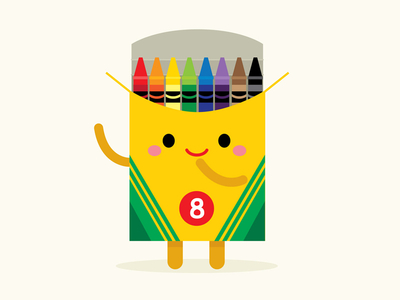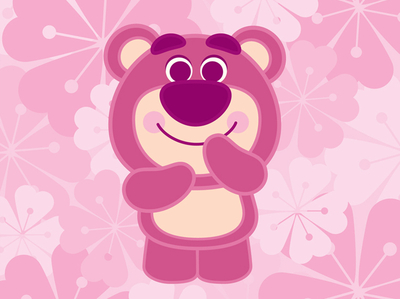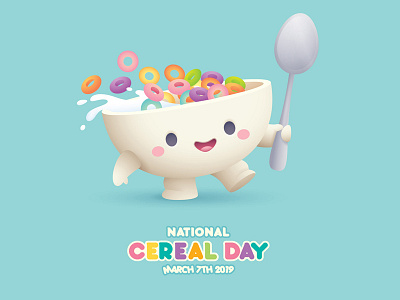Meet Jerrod Maruyama, a freelance illustrator based in Sacramento, California specializing in character design and all things cute. In this exclusive video interview, Jerrod explains the key difference between art and illustration and how to find your own voice as a creative. Get inspired by Jerrod’s creative outlook as he shares what inspires and motivates him to keep growing and improving.
My name is Jerrod Maruyama. I am a freelance illustrator and I specialize in cute character designs.
What does illustration mean to you?
At the very basic level, it’s communication. Conveying something. I’ve always said that illustration is like art with a job. It has to have a purpose. It can’t just exist out of nothing. Then I think you’re in the fine art territory. When I sit down to do an illustration, that’s always my goal—how can I best communicate whatever it is I’m trying to get across? With that as the structure I think it sets up kind of exactly what you have to do. So, that’s a lot of the legwork right there. The rest of it is just sort of fulfilling the order.
How would you describe your work?
The type of illustration work I do primarily focuses on character design and the cute aesthetic. I find that in the world of illustration, my work tends to slide more towards the design side of things. I am dealing with very simple shapes and objects to create these characters, but there’s a little more to it than that as well. There’s some background elements and things but things are kept very simple. So, just like in design I think, when you have fewer elements to work with the work becomes very specific. It’s not like you can hide behind big swatches of color or filters or things like that. Everything’s very precise. So the space between the eyes and in character or between the eyes and the nose, that all is key. So I could spend a lot of time just fine tuning and adjusting just as you would if you were creating say a logo.
What is your ideal project?
An ideal project for me would be when I get to create a character, but when I have parameters around that character. To just sit down with a blank canvas without any rules or without any requirements, that’s much harder for me. I enjoy the challenge of sort of fulfilling an order. Whether that’s a client or whether that’s something I impose on myself, I feel like there has to be a story, there has to be a backstory. There has to be a reason for this character to exist. At the end of it, you have a way of sort of measuring the success by saying, “Did I satisfy this thing? Am I communicating this right? Is this the best way to tell this story?”
Feeling uninspired…
For me, to sort of reawaken creativity I like to just go back to why I originally started drawing. Whether that’s drawing something specifically for someone or drawing the things that I used to draw, or drawing a favorite character. That usually helps me get out of any kind of rut that I might be in. So it’s like putting away the dull job for a moment and sort of revisiting something else just to get your spark back in. And then I think you can bring that back to the work that you’re doing and find a way because there’s nothing worse than work that is sort of uninspired. I think our job as creatives, as professional creatives, is to constantly find a way to make even the most boring, mundane jobs interesting.
Creating boundaries with clients…
What I’ll try to do in those cases is get a first pass as soon as I possibly can. Just so that there’s a reaction. I think people are better at reacting to things than they are at creating things out of the blue. So you just want to get the ball rolling and I think once you do that people are very quick to have opinions and then those checkboxes automatically start appearing.
The impact of Dribbble on your career…
For me as an illustrator Dribbble has introduced my work to I think a very specialized area that might not normally see illustration. It seems these days that illustration and design are blending more than ever and Dribbble has been a fantastic medium to sort of get eyes on my work that wouldn’t normally see it in the illustration world.
Advice…
Be very specific about the goals that you want to achieve and dream big. Dream bigger than you think is possible because that’s what’s going to help you advance. Because I think oftentimes, we underestimate what we’re able to do and where we can go and suddenly you’re there and you realize you don’t have a plan for beyond that. It really comes down to ultimately what you’re able to do. And then the last bit of advice I’d give is don’t take advice from anybody. Just do your own thing. Find your own way because ultimately that’s what you’re going to do. People give advice based on their life experience and the journey that they’ve had and that’s not yours. So it doesn’t always make sense and you can try to force fit it but I think ultimately you have to find your own way.
You did it… Now what?
When I was younger my whole goal was to work for Disney or to work for one of these big studios and I think that’s still an admirable goal. But I think the better thing is to say I want to be a great artist, I want to be a great designer, whatever that may be. And then the other jobs will come. Because I think oftentimes when we do land these jobs, it can be sort of unfulfilling because we’ve built it up for so long in our head about what this magic place will be like or what this magic job will be, that it can’t help but be disappointing. So I think if you focus more on the work and the art, the other stuff will just follow up with that as well. And I think that’s just a better goal than working for a specific company.
Want to keep up with Jerrod? Find him on Dribbble, Twitter, and at jmaruyama.com.
Find more Interviews stories on our blog Courtside. Have a suggestion? Contact stories@dribbble.com.











